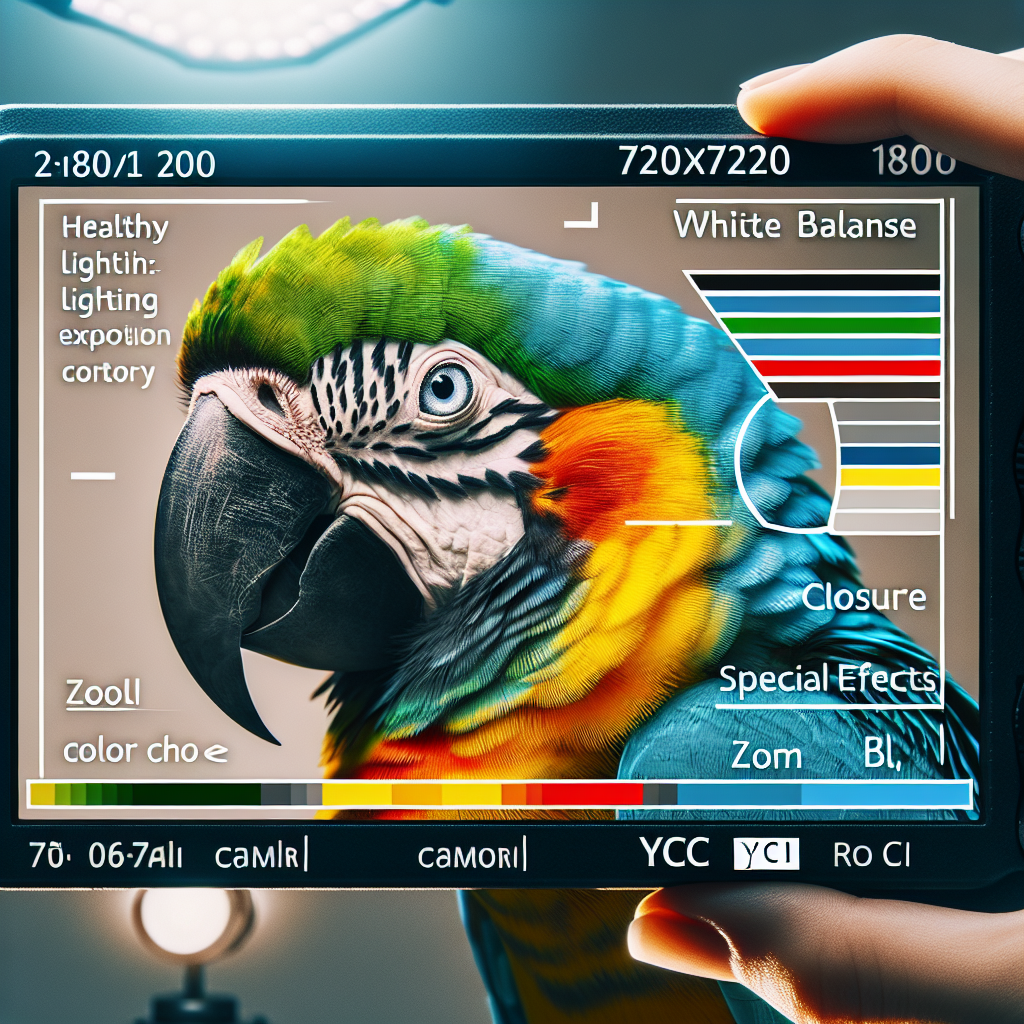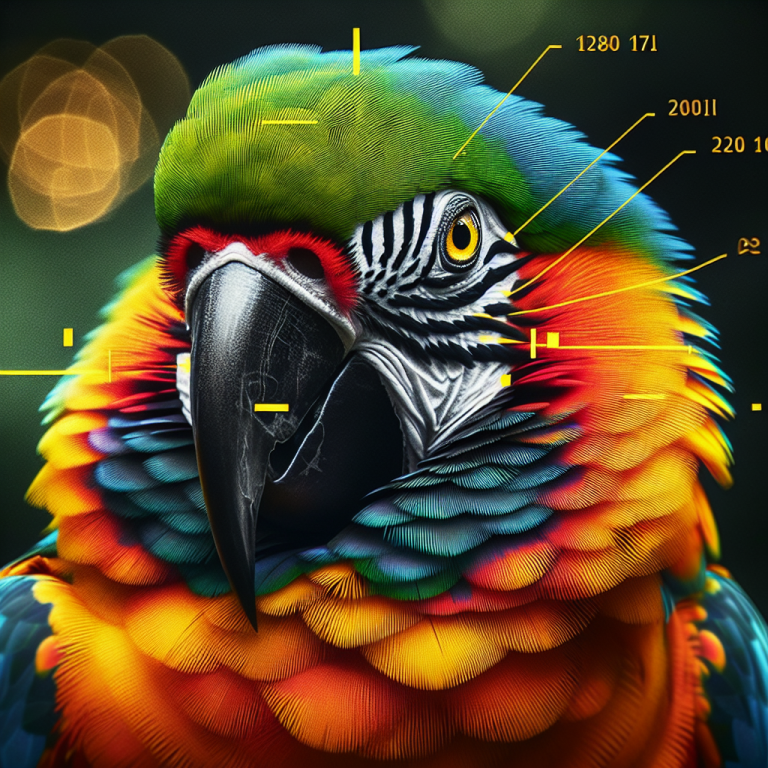The Importance of Sunlight for Parrots: How Much is Enough?
Parrots are known for their vibrant colors, playful personalities, and impressive ability to mimic human speech. But did you know that these feathered friends also have a unique relationship with the sun? That’s right, just like humans, parrots need sunlight to thrive. But how much sun should your parrot be getting? Let’s dive into the importance of sunlight for parrots and find out just how much is enough.
First and foremost, it’s important to understand why sunlight is crucial for parrots. In the wild, parrots spend most of their day basking in the warm rays of the sun. This not only helps them regulate their body temperature but also provides them with essential vitamins and nutrients. Sunlight is a natural source of vitamin D, which is necessary for the absorption of calcium and phosphorus. These minerals are crucial for maintaining strong bones and a healthy immune system in parrots.
But before you start taking your parrot on daily sunbathing sessions, it’s important to note that too much sun can also be harmful. Just like humans, parrots can get sunburned if exposed to direct sunlight for extended periods. This can lead to feather damage, skin irritation, and even skin cancer. So, how do you strike the right balance? Well, it all depends on the type of parrot you have.
Different species of parrots have different sun requirements. For example, parrots from tropical regions, such as macaws and cockatoos, are used to basking in the sun for hours on end. On the other hand, parrots from temperate regions, like African greys and Amazon parrots, are more sensitive to sunlight and can easily get sunburned. So, it’s important to do your research and understand your parrot’s natural habitat to determine their sun needs.
Another factor to consider is the time of day. Just like humans, parrots are most sensitive to the sun’s rays during midday when the sun is at its strongest. It’s best to avoid direct sunlight during this time and instead opt for early morning or late afternoon sun exposure. This will still provide your parrot with the necessary vitamin D without the risk of sunburn.
But what if you live in an area with limited sunlight or during the winter months when the sun is scarce? Don’t worry, you can still provide your parrot with the necessary sunlight through artificial means. Full-spectrum lights, also known as UVB lights, mimic the natural sunlight and provide parrots with the necessary vitamin D. These lights are especially important for parrots that spend most of their time indoors.
Now, let’s talk about the duration of sun exposure. As mentioned earlier, too much sun can be harmful to parrots. So, how do you know when it’s time to bring your parrot back inside? Well, a good rule of thumb is to limit sun exposure to 20-30 minutes at a time. This will give your parrot enough time to soak up the necessary vitamin D without the risk of sunburn. Of course, this can vary depending on the type of parrot and the intensity of the sunlight.
In conclusion, sunlight is essential for the health and well-being of parrots. It provides them with necessary vitamins and minerals, helps regulate their body temperature, and promotes a healthy immune system. However, it’s important to strike the right balance and not overexpose your parrot to direct sunlight. By understanding your parrot’s natural habitat and following the tips mentioned above, you can ensure that your feathered friend gets just the right amount of sun to thrive. So, go ahead and let your parrot soak up some rays, but don’t forget the sunscreen!
Finding the Right Balance: Sun Exposure for Your Pet Parrot

As a proud parrot owner, you want to make sure your feathered friend is getting all the love and care they deserve. You provide them with a spacious cage, a variety of toys, and a healthy diet. But have you ever stopped to think about how much sun your parrot is getting? Yes, you read that right, sun exposure is just as important for your pet parrot as it is for you. But how much sun should your parrot actually get? Let’s find out.
First and foremost, it’s important to understand why sun exposure is crucial for your parrot. Just like humans, parrots need sunlight to produce vitamin D, which is essential for their bone health. Without enough vitamin D, parrots can develop weak bones and even suffer from a condition called metabolic bone disease. So, it’s safe to say that sun exposure is not just a luxury for your parrot, it’s a necessity.
Now, you may be thinking, “But my parrot is always in their cage, isn’t that enough sun exposure?” Unfortunately, no. While natural light can filter through the windows, it’s not enough for your parrot to produce sufficient amounts of vitamin D. Plus, let’s be real, your parrot probably spends most of their time inside their cage, which means they’re not getting any direct sunlight at all.
So, how much sun should your parrot get? The general rule of thumb is 2-4 hours of direct sunlight per day. This may seem like a lot, but keep in mind that parrots are diurnal creatures, meaning they are most active during the day. So, those 2-4 hours can easily be spread out throughout the day. You can even let your parrot out of their cage for a few hours to bask in the sun while you’re at work or running errands.
But what if you live in an area where the weather is not always sunny? Don’t worry, your parrot can still get their daily dose of vitamin D. You can invest in a full-spectrum light bulb that mimics natural sunlight. These bulbs are specifically designed for birds and provide them with the necessary UVB rays to produce vitamin D. Just make sure to place the bulb at a safe distance from your parrot’s cage, as too much exposure can also be harmful.
Now, let’s address the elephant in the room, or should I say, the parrot in the room. Some of you may be thinking, “But my parrot hates the sun, they always hide in the shade.” Well, just like humans, parrots have different preferences. Some may love basking in the sun, while others may prefer the shade. If your parrot falls into the latter category, don’t force them to stay in the sun. Instead, try to find a balance. Maybe they can spend some time in the sun and then retreat to a shaded area when they’ve had enough.
It’s also important to note that too much sun exposure can be harmful to your parrot. Just like humans, they can get sunburned, which can lead to feather damage and even skin cancer. So, make sure to monitor your parrot’s sun exposure and provide them with a shaded area in their cage where they can retreat to if they feel too hot.
In conclusion, sun exposure is crucial for your pet parrot’s health and well-being. Aim for 2-4 hours of direct sunlight per day, or invest in a full-spectrum light bulb. Remember to find a balance and monitor your parrot’s sun exposure to ensure they are not getting too much or too little. And most importantly, have fun watching your parrot bask in the sun, it’s a sight to behold.
Sun Safety for Parrots: Tips for Protecting Your Feathered Friend
As a parrot owner, you may be wondering how much sun your feathered friend should be getting. After all, we all know that too much sun exposure can be harmful for humans, but what about our avian companions? Well, the answer is not as straightforward as you may think. Just like humans, parrots need a healthy balance of sun exposure to thrive. So, let’s dive into the world of sun safety for parrots and learn some tips for protecting your feathered friend.
First and foremost, it’s important to understand that parrots are not like other pets. They are not meant to be cooped up in a cage all day long. In their natural habitat, parrots spend most of their day flying and foraging for food. This means that they are exposed to the sun for a significant amount of time. So, it’s safe to say that parrots do need some sun exposure to stay healthy.
But how much sun is too much? Well, it depends on the type of parrot you have. Some parrot species, like African Greys and Cockatoos, are native to tropical regions and can handle more sun exposure. On the other hand, parrots from cooler climates, such as Amazons and Conures, may not be able to tolerate as much sun. So, it’s important to do your research and understand your parrot’s natural habitat and needs.
Now, let’s talk about the dangers of too much sun exposure for parrots. Just like humans, parrots can suffer from sunburns and heatstroke. This is especially true for parrots with light-colored feathers or those that are kept in cages with no shade. So, it’s important to provide your parrot with a shaded area in their cage or aviary. You can also use a UV-blocking cover for their cage to protect them from direct sunlight.
Another thing to keep in mind is that parrots can also suffer from dehydration if they are exposed to too much sun. This is because they do not have sweat glands like humans and rely on panting to cool down. So, make sure your parrot always has access to fresh water and keep an eye on their water intake during hot days.
On the other hand, not getting enough sun exposure can also be harmful to parrots. Sunlight is essential for the production of Vitamin D, which helps with calcium absorption and bone health. Without enough Vitamin D, parrots can develop health issues such as weak bones and egg-binding in females. So, it’s important to provide your parrot with access to natural sunlight or a full-spectrum UVB light for at least 2-3 hours a day.
But what about those days when the sun is scorching hot or when it’s raining? Well, that’s where you come in as a responsible parrot owner. Just like you would protect yourself from the sun, you need to protect your parrot as well. This means providing them with a shaded area, keeping them hydrated, and limiting their time in direct sunlight during the hottest part of the day.
In addition to providing shade and water, you can also help your parrot stay cool by misting them with water or providing them with a shallow dish of water to bathe in. This not only helps them cool down but also keeps their feathers clean and healthy.
In conclusion, the amount of sun exposure your parrot needs depends on their species and natural habitat. It’s important to provide them with a healthy balance of sun exposure, while also protecting them from the dangers of too much sun. As a responsible parrot owner, it’s your job to ensure that your feathered friend stays safe and healthy, even on the sunniest of days. So, go ahead and let your parrot soak up some sun, but don’t forget to keep an eye on them and provide them with the necessary protection. After all, a happy and healthy parrot is a happy and healthy owner.

